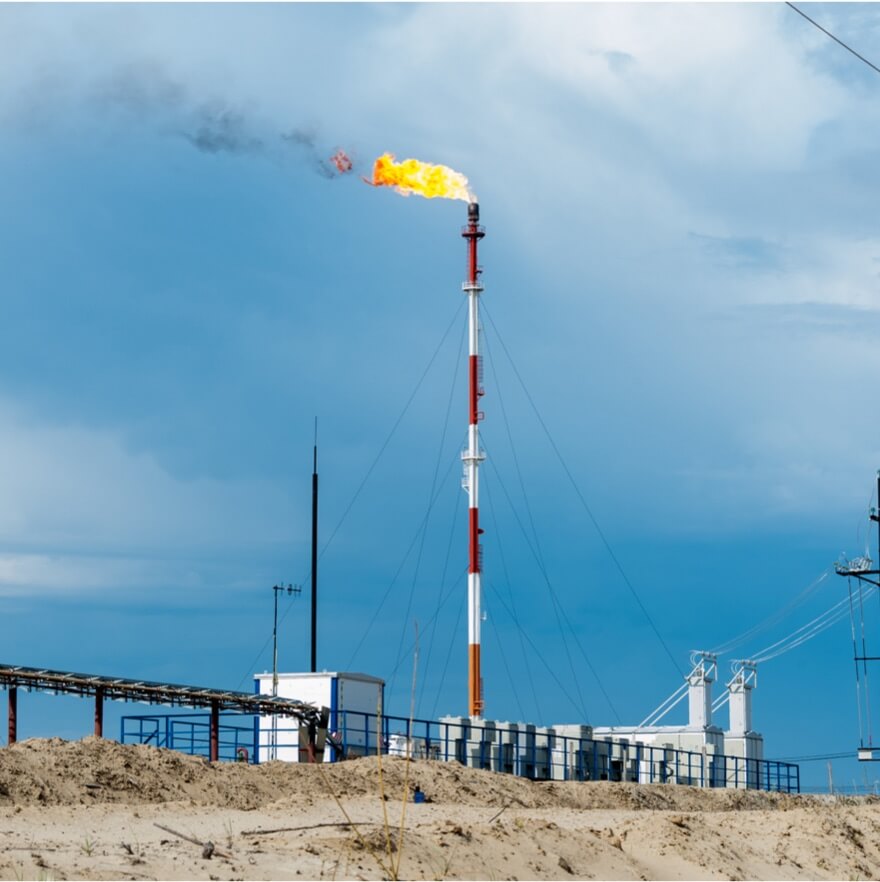Methane
Reducing methane emissions is the fastest way to slow global warming
When it comes to slowing the amount of global warming we’ll experience in the next 20 years to avoid passing irreversible climate tipping points, cutting methane emissions is the only clear action we can take and a key part of the foundation for any successful climate strategy.
CATF was the first environmental group to publicly sound the alarm about the dangers of methane emissions and pollution.
The effects of methane
Acting now to reduce methane pollution is critical to stay below
the 1.5°C global warming target.
0.5°C
Methane is responsible for 0.5°C of global warming experienced to date.
80x
Methane traps over 80 times more heat in our atmosphere than carbon dioxide over the first 20 years.
40%
Existing technologies could cut methane emissions by more than 40%.
What is methane pollution?
Reducing methane pollution is the fastest way to slow global warming and avoid near-term and
irreversible impacts such as collapsing glaciers.
Methane emissions from human activities

Fossil fuels such as coal, oil, natural gas, and biomass

Agriculture such as animals raised for meat and dairy and rice cultivation

Waste such as landfills and sewage
Methane FAQs
Does focusing on reducing methane emissions distract from efforts to reduce carbon dioxide emissions?
While it’s true that efforts to reduce carbon dioxide emissions are critical to any long term climate strategy, decarbonizing our energy system does not provide any reduction in warming for 20 to 30 years, a critical time frame during which warming could push the planet past irreversible climate tipping points. That’s where methane reductions come in as a complementary strategy. According to the UN’s Intergovernmental Panel on Climate Change, immediately cutting methane emissions is the best way to reduce the amount of warming we’ll experience in the next 20 years.
What kinds of solutions can help to curb methane emissions?
We have readily available solutions to reduce methane emissions from all three major emitting sectors:
- We can substantially reduce methane emissions from oil and gas by detecting and repairing leaks, eliminating wasteful gas venting and flaring, and updating outdated equipment at oil and gas facilities.
- In the agriculture sector, we can curb methane emissions by implementing better livestock and manure management practices throughout global meat and dairy production.
- We can cut emissions from the waste sector by requiring landfills to strictly control releases of methane-rich landfill gas and by reducing and diverting organic waste away from landfills to be composted or processed in biogas digesters.
Will cutting methane emissions be costly or require new technologies?
No. According to the Global Methane Assessment, we can cut methane emissions almost by half by 2030 using currently available technologies.
What’s more, roughly 60% of available targeted measures to reduce methane emissions have low mitigation costs, and over 50% of those have negative costs.
Does reducing methane emissions have other benefits?
Yes. Because methane is the primary contributor to the formation of ground-level ozone, a hazardous air pollutant and greenhouse gas, reducing emissions of methane can lead to improved air quality and public health. Cleaning up methane also prevents crop losses, creates jobs, and increases productivity, according to the Global Methane Assessment.
What are super pollutants?
Super pollutants, also sometimes referred to as short-lived climate pollutants (SCLPs), derive their name from their relatively short life in the atmosphere as compared to carbon dioxide. For example, black carbon has a lifespan in the atmosphere of just a few days before falling to the earth, and methane persists for a little more than a decade. Super pollutants have significant harmful effects on both human health and the environment.
Learn more about super pollutants.

Global Methane Pledge
Uniting the world to #CutMethane
The first-ever Global Methane Pledge is part of CATF’s global methane reduction strategy. It’s time to engage at all levels and demand that more countries sign the pledge.
Strong policies to address global methane pollution from any fuels produced, consumed, imported or exported will help ensure that the world stays below the 1.5 degrees Celsius warming target.
CATF’s Cut Methane Campaign
The hidden dangers of methane emissions
Methane pollution is invisible to the naked eye, so a special camera is needed to monitor for leaks and emissions. Optical gas imaging (OGI) cameras are powerful handheld scientific instruments that are used in the oil and gas sector to visualize methane pollution that is being released into the atmosphere. Our experts have been documenting methane emissions across hundreds of oil and gas sites across the EU.
Comat
Supporting governments to drive action
CoMAT – CATF’s Country Methane Abatement Tool – empowers governments with the ability to estimate how much methane pollution they can reduce from their country’s oil and gas industries, even when they have limited information about the industry and its current emissions. Fully customizable, countries can then explore variables and specific policy options that will lead to emission reductions.
Get Involved
Make an impact by donating to CATF
As a CATF supporter, you are investing in our efforts to successfully implement new strategies and build strong partnerships that drive progress forward. Donate or sign up to receive the latest content, news, and developments from CATF experts.




